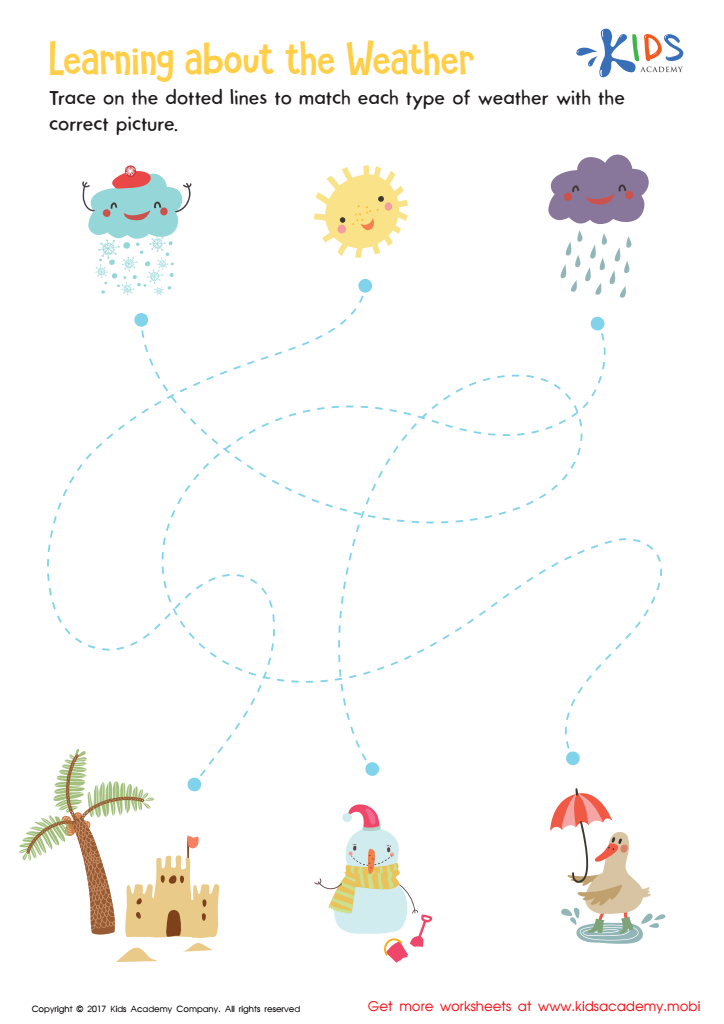Fun and Educational Weather Worksheets for 5-6 Year Olds | Explore Science with Kids Academy
16 filtered results
-
From - To
Dive into the fascinating world of meteorology with our "Normal Weather for Ages 5-6" worksheets! Tailored specifically for young learners, this collection is designed to spark curiosity and understanding about the weather patterns that shape our everyday lives. Through a series of engaging activities, children will learn about different types of weather, how to identify them, and their characteristics. These worksheets combine fun with education, offering vibrant illustrations, easy-to-follow explanations, and interactive exercises that foster learning and retention. Perfect for both classroom and at-home learning, "Normal Weather for Ages 5-6" is your go-to resource for introducing the wonders of weather to young minds.
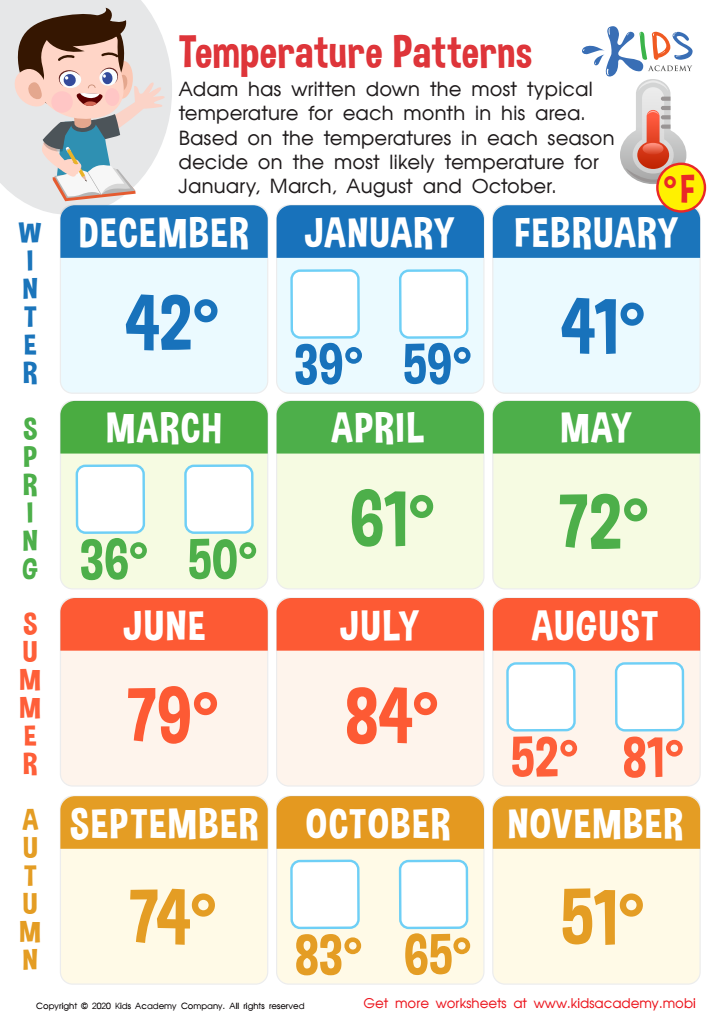

Temperature Patterns Worksheet
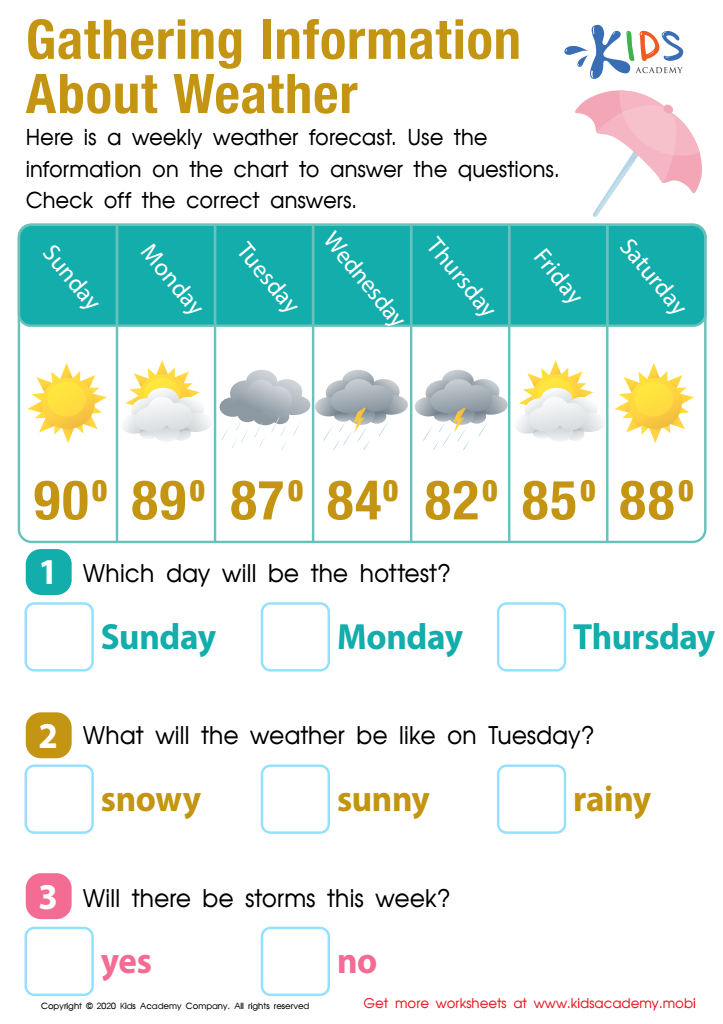

Gathering Information About the Weather Worksheet
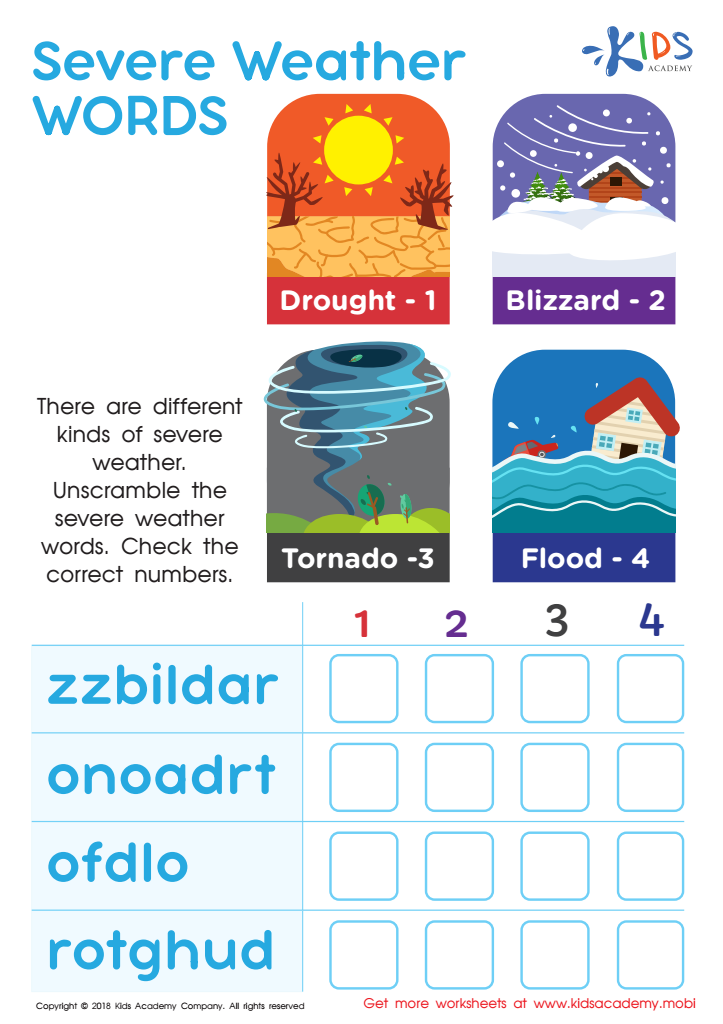

Severe Weather Words Worksheet
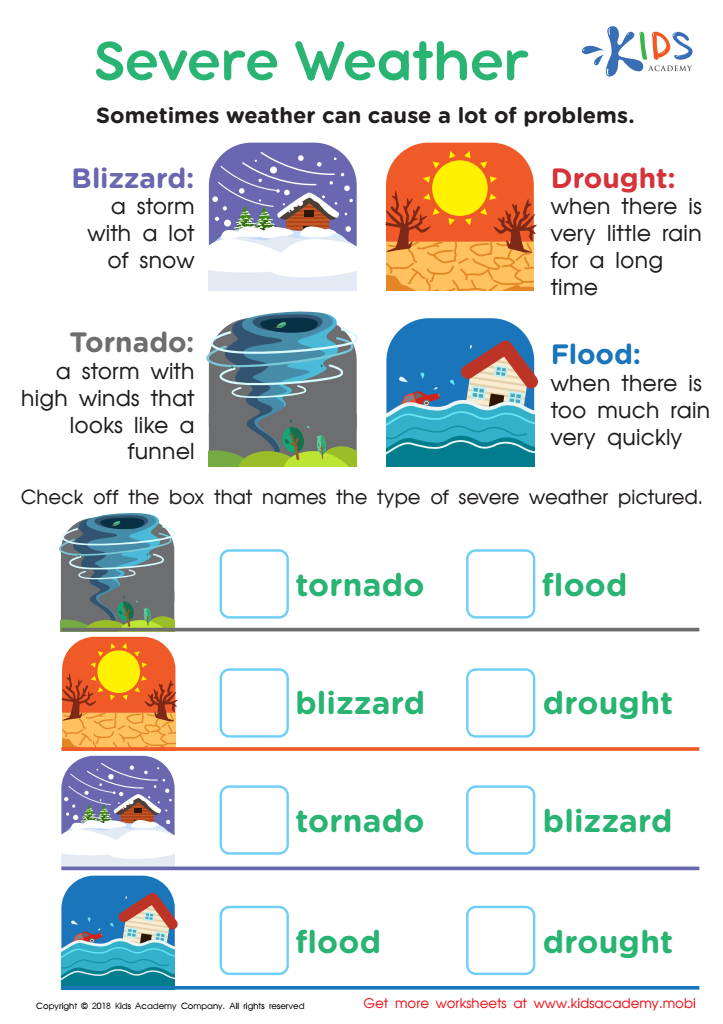

Severe Weather Worksheet
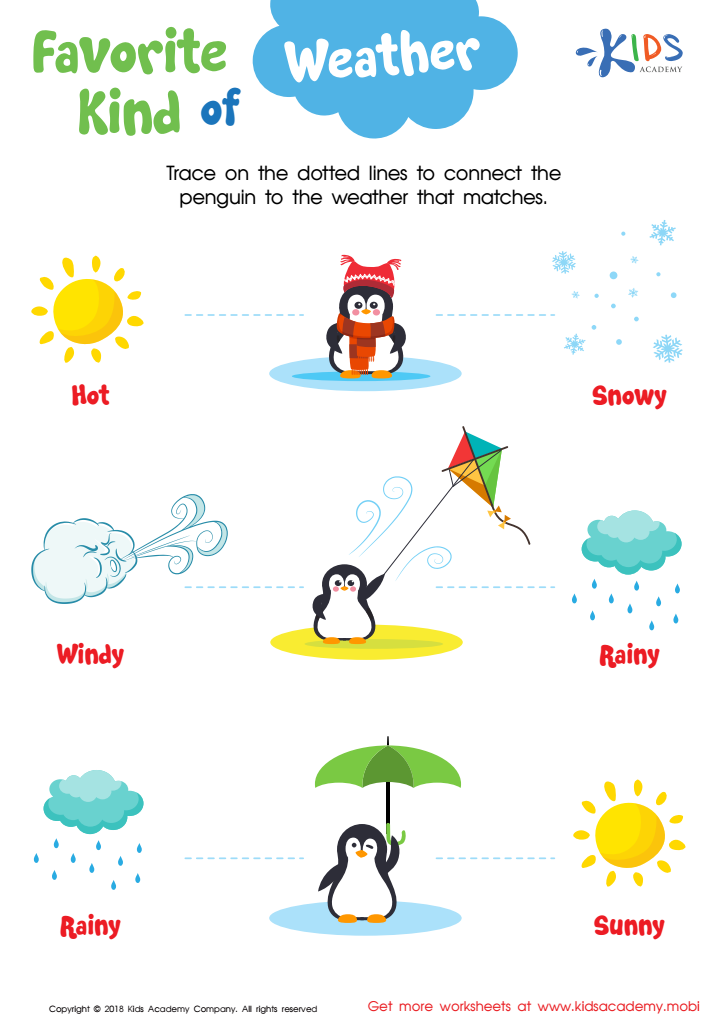

Favorite Kind of Weather Worksheet
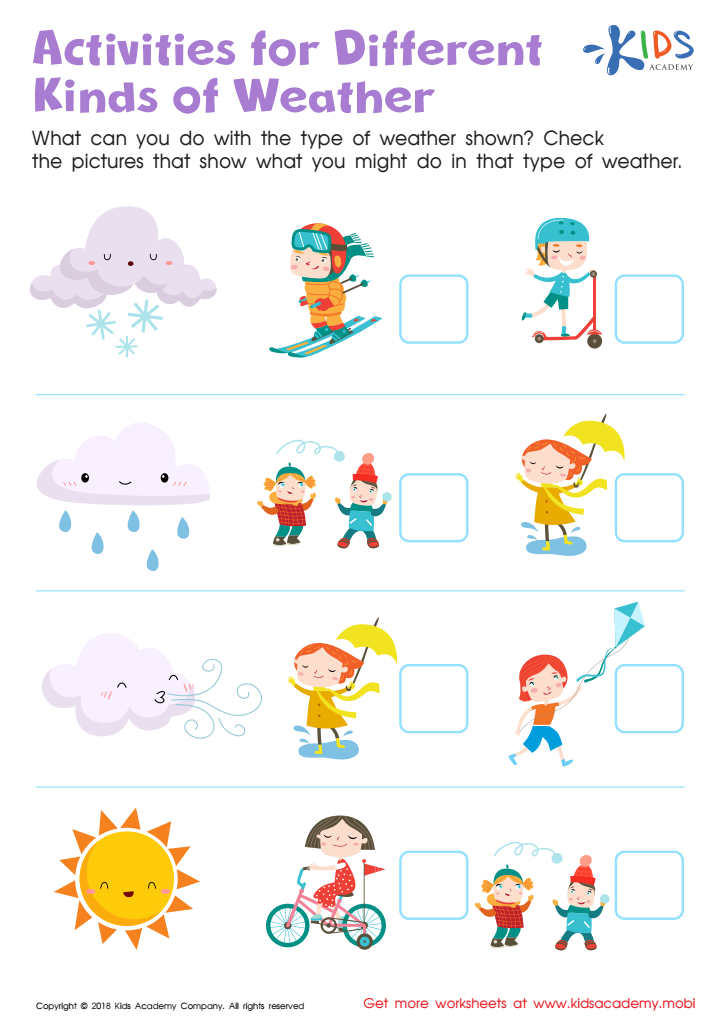

Activities for Different Kinds of Weather Worksheet


Guess the Season Worksheet
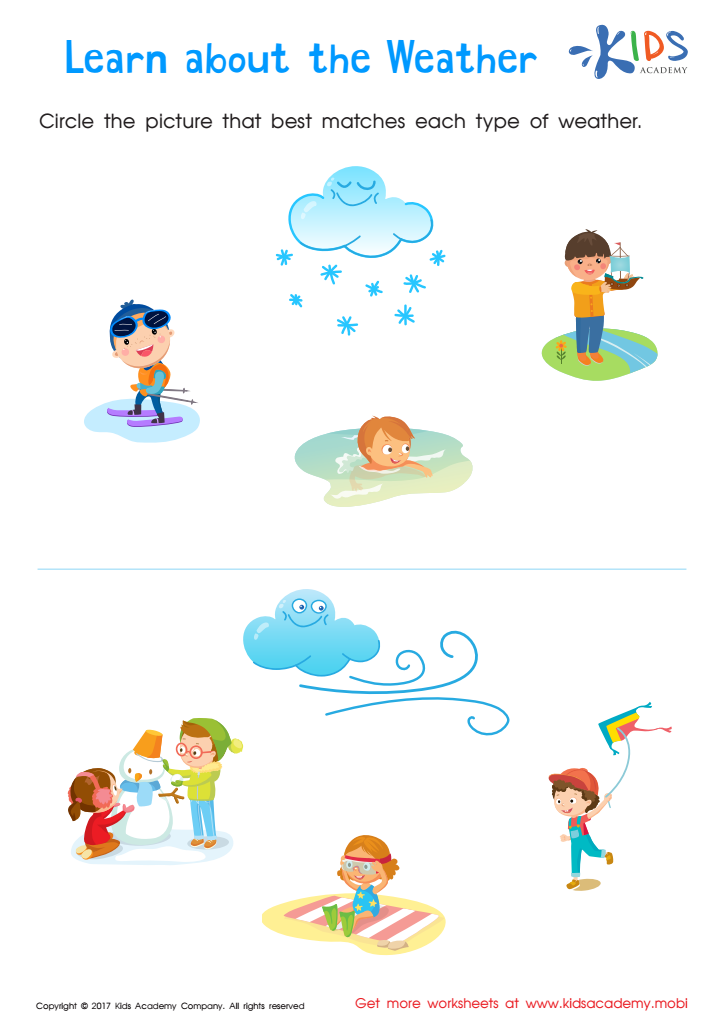

About the Weather Printable
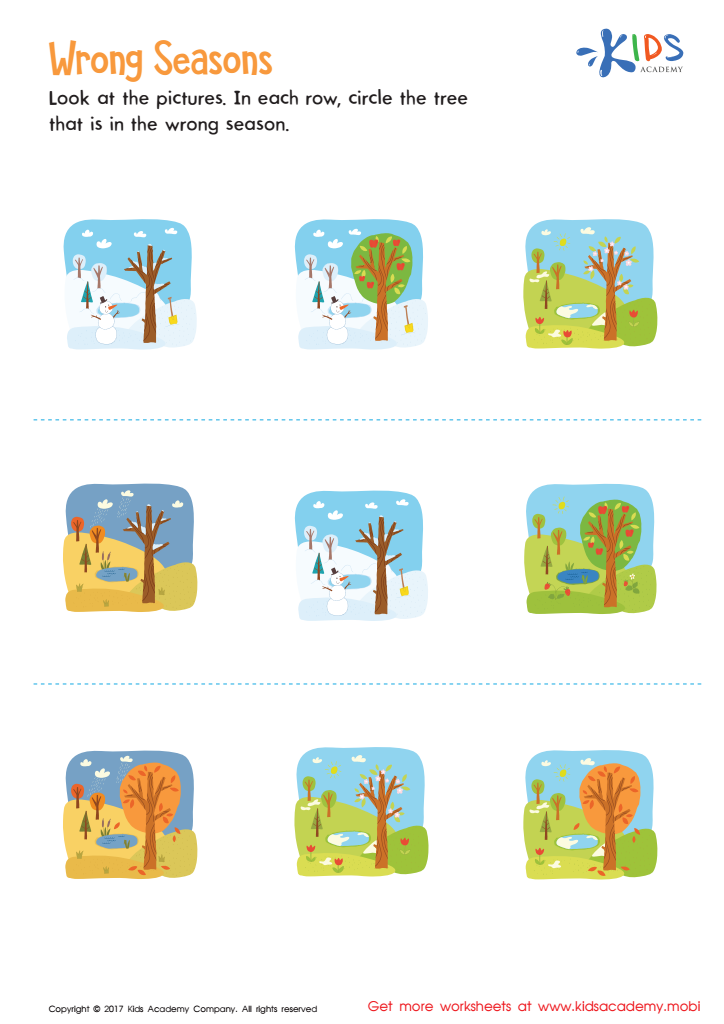

Wrong Seasons Worksheet


Hows the Weather Worksheet


What's the Weather Like? Worksheet
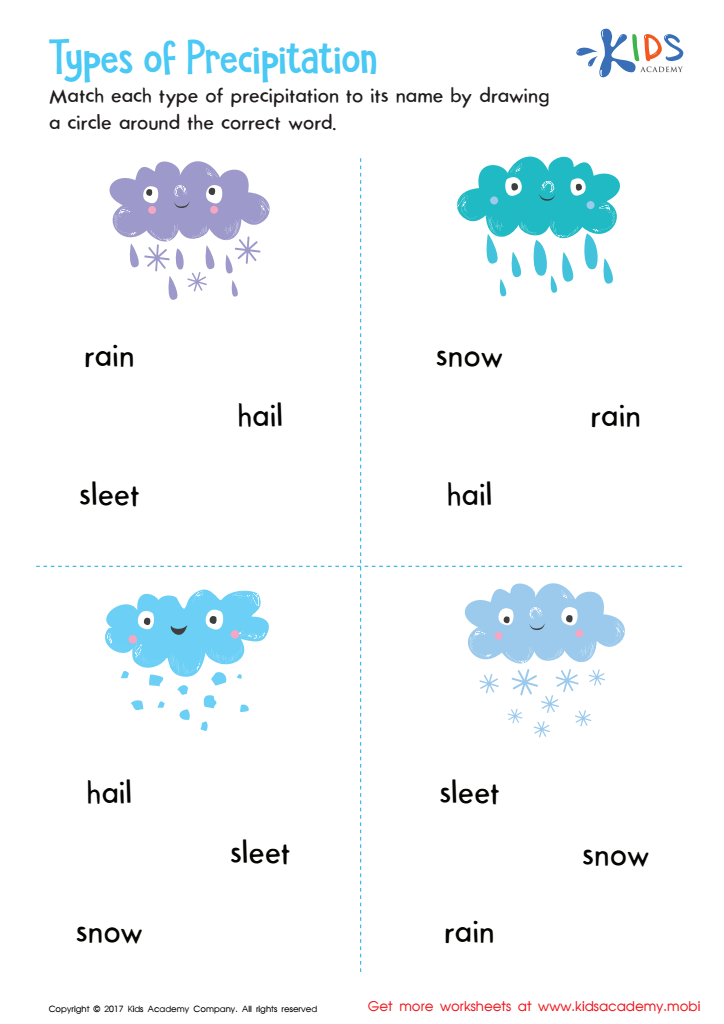

Types of Precipitation Printable


Different Kinds of Weather: Windy and Snowy Worksheet
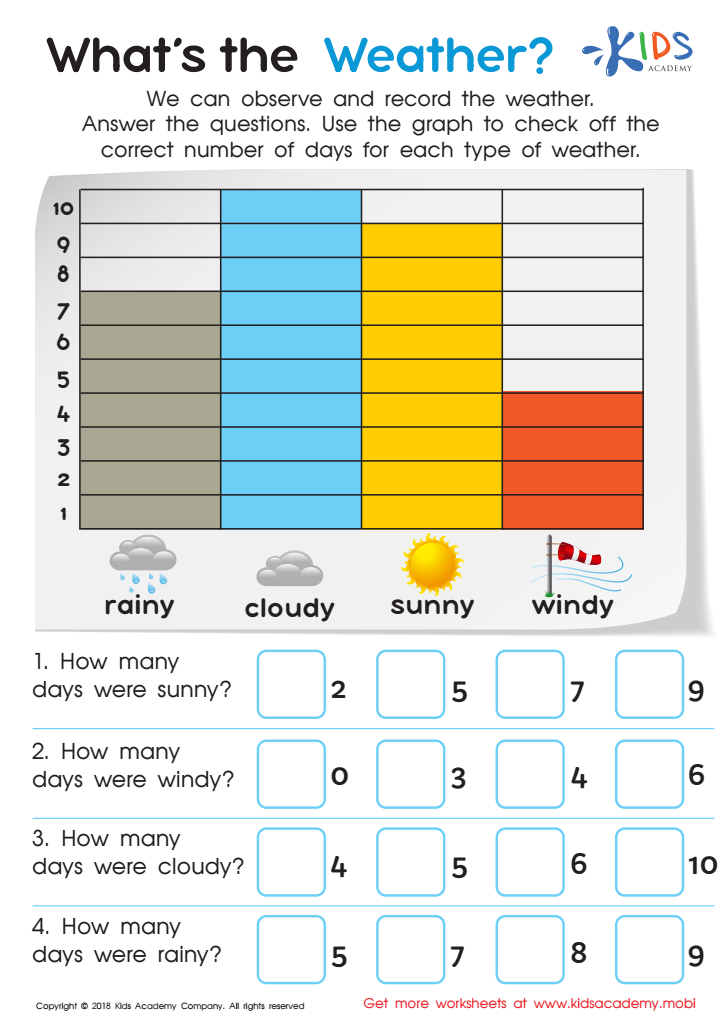

What's the Weather? Worksheet
Normal weather worksheets designed for ages 5-6 are incredibly beneficial for young learners for several reasons. First and foremost, they serve as a fantastic introduction to the fascinating world of weather, engaging children’s curiosity about the environment around them. At this formative age, children are naturally inquisitive, and these worksheets tap into that desire to learn, making education both fun and impactful.
Moreover, normal weather worksheets are specifically tailored to the cognitive and developmental stage of 5-6-year-olds. They are crafted with simple, easy-to-understand language and activities that perfectly suit their attention span and learning capabilities. Through interactive tasks such as identifying weather patterns, coloring, and basic weather-related vocabulary exercises, children not only learn but also develop essential motor skills and language abilities.
Additionally, these worksheets encourage critical thinking and observation skills. Kids learn to observe and describe the weather, fostering a connection with nature and science from a young age. This early exposure can spark a lifelong interest in science, geography, and the environment.
Normal weather worksheets for ages 5-6 are more than just educational tools; they are a gateway to discovery and learning, making complex concepts accessible and enjoyable for young minds. They help lay a solid foundation for future learning, making them indispensable in early childhood education.

 Assign to My Students
Assign to My Students




